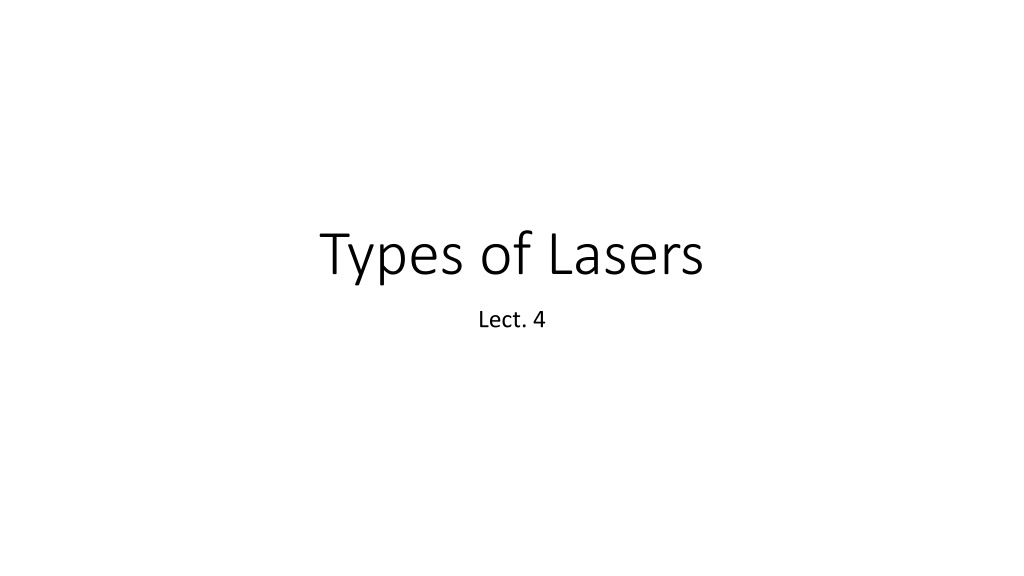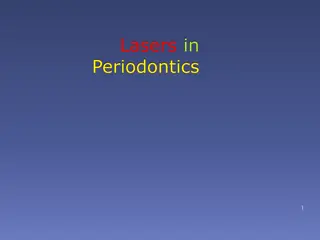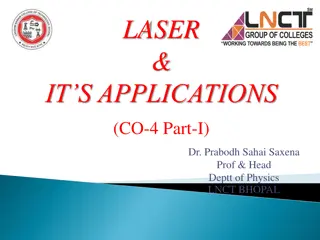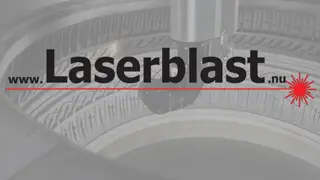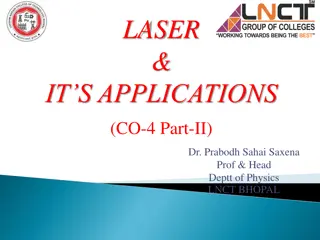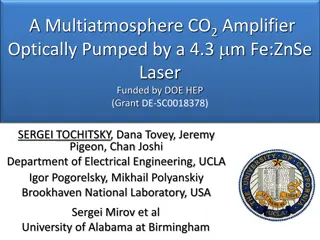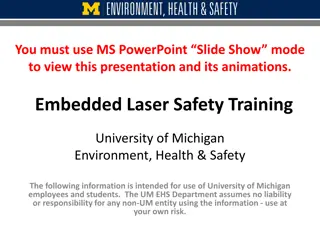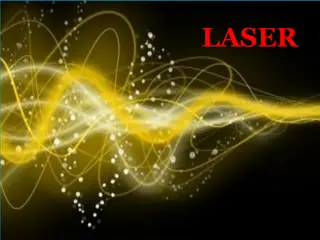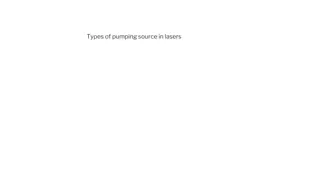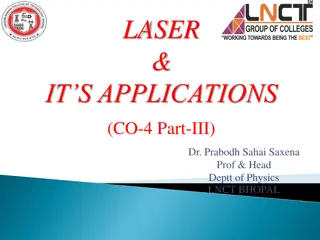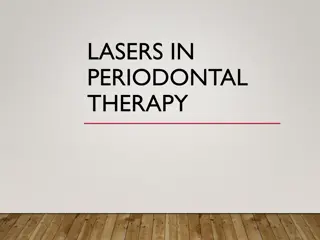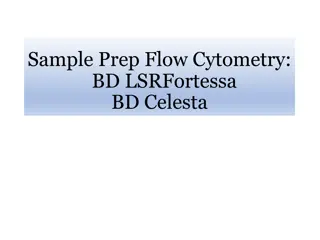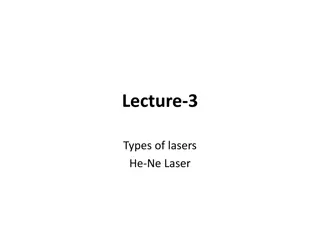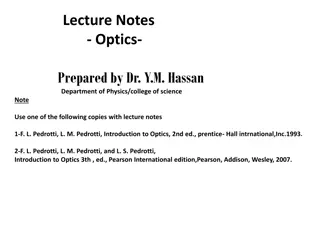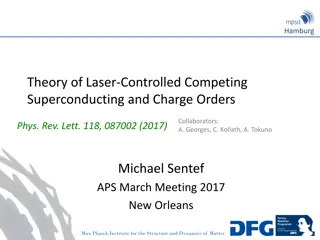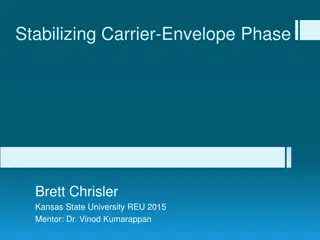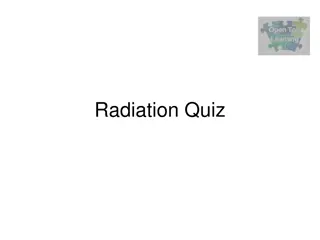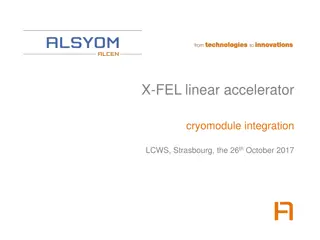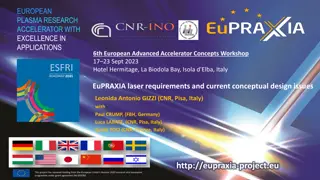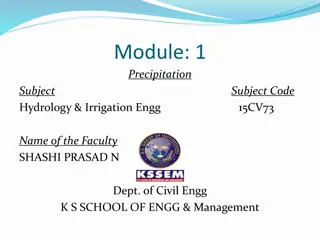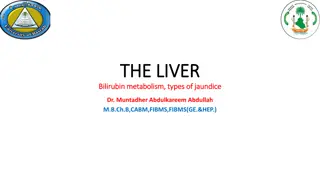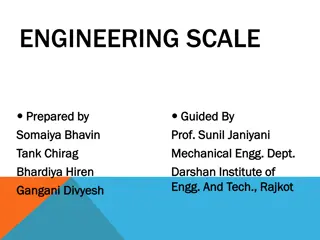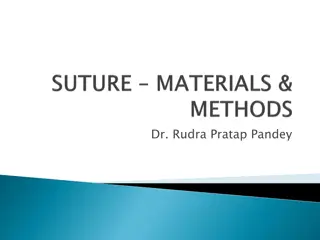Overview of Different Types of Lasers
Neodymium glass, liquid-state, and gas-state lasers are discussed in this content. Neodymium glass lasers use neodymium-doped glass as the active medium, while liquid-state lasers utilize organic dye dissolved in a solution. Gas-state lasers involve a single gas or a mixture of gases in a tube. Each type has distinct features, advantages, and disadvantages, making them suitable for various applications in laser technology.
Download Presentation

Please find below an Image/Link to download the presentation.
The content on the website is provided AS IS for your information and personal use only. It may not be sold, licensed, or shared on other websites without obtaining consent from the author. Download presentation by click this link. If you encounter any issues during the download, it is possible that the publisher has removed the file from their server.
E N D
Presentation Transcript
Types of Lasers Lect. 4
Neodymium glass laser the active medium is glass denatured by Neodymium ions(Nd +3) (active ions) with doping rate up to (6%). The color of the crystal is purple (8). dimensions of the crystal are from a few microns to (2 cm) length and the diameter (6-10 m). The Pumping using the flash lamp). with an efficiency not exceeding (1.5%) or using a semiconductor laser with an efficiency of up to (70%). It works with a system of quadrupole levels and it dose need good cooling system. The active pattern (function of work) is impulsive The wavelengths of the outgoing laser beam are three (0.9Pm) 1.06) (most powerful) &( 1.4Pm) Question: Compare between the Neodymium -YAG laser and the Neodymium -glass laser.
Liquid-state lasers are dye-lasers The dye laser consists of the active medium, pump source, power supply, and ancillary parts. Active medium: It is an organic dye dissolved in a suitable solution such as water or ethyl alcohol and others. Pumping source: The flashlight is used as for solid state lasers. The effective medium can be pumped with another laser beam such as the copper vapor laser, and this method is more efficient than the flash lamp method. Power supply and accessories parts as mentioned in solid state lasers.
Features and disadvantages of Liquid state lasers Liquid-state lasers are characterized by: The possibility of obtaining a wide beam of laser wavelengths and this is called Tuning Ease of formation of (dissolving of the dye in Solution) The ability to change the dye concentration easily (reduce it by diluting the solution or increasing it by concentrating the solution) There are no crystal defects Ease of cooling process by stirring the solution the active medium The disadvantages of liquid state lasers are: 1. Instability due to fluid movement 2. The solvent can block the generation of the laser 3. It is affected by heat very much 4. The dye degrades when exposed to light Among the most prominent types of dye lasers are: 1. Rhodamine dye laser (570-610) nm and emit in the (R6G) 6G range 2. Rhodamine dye laser(605-635) nm and emit in the (RB) B2 range 3. Coumarin dye laser(400-575) nm and emits in the range (Coumarin) 4. Polymethane dye laser(710-950) nm and emit (Polymethane)
Gas state laser The gas laser consists of the active medium, pump source (power supply) and ancillary parts. The active medium is a glass or ceramic tube containing a single gas such as the Argon and Xenon lasers and hydrogen and nitrogen or a mixture of two gases, such as helium-neon lasers, hydrogen fluoride and xenon chloride, or a mixture of more than two gases such as CO2: N2: He lasers Gas lasers are also divided into many types according to the laser generation mechanism into: 1. Neutral gas lasers such as(He-Cd) (He-Ne) 2. Lasers for ionic gases such as(Kr +) and (Ar +) 3. molecular gas lasers such as (KrF) and (CO3) The concentration of atoms or molecules is about Therefore, the size of the gas laser system is greater than the size of the system Solid state lasers. The gas laser cannot be pumped with a flash lamp because the absorption range for the gas is very narrow. The pumping source is an electrical power supply that converts electrical energy into two electrodes in the tube (the anode And a cathode) that contains the gas (or gases), then the electric discharge of the gas (plasma generation) occurs and the laser is generated. The cooling of the vacuum tube can be done by passing cold water or air around the tube or by pumping gases (or Gases) very quickly into the vacuum tube. The mirrors of the gas laser are usually attached to the vacuum tube and can be detached from it. This laser is important because it is inexpensive, versatile, and operates in a continuous fashion and is not dangerous when used. The active medium is a mixture of helium and neon gases placed in a glass tube 10 -80cm long and a diameter of (2-10)mm under 8- 12Torr pressure. The power supply is small in size because this system needs small power for operating. The outward wavelength is 632.8nm in IR region.
Carbon dioxide lasers The active medium is a mixture of carbon dioxide, nitrogen and helium in certain proportions. The mixture is placed in a glass tube containing two electrodes (the cathode and the anode) and the electric potential is applied to the gas mixture between the two electrodes, so the laser is generated from carbon dioxide while the role of nitrogen gas, it is to improve the process of pumping carbon dioxide particles. The role of helium gas is to cool carbon dioxide gas, so this light is called a carbon dioxide gas laser. There are six types of this laser: 1. Linear flow and axial discharge CO2 Laser 2. Fast Flow CO2 Laser 3. Sealed-off CO2 Laser 4. Gas transverse excitation laser(TE CO2 Laser) 5. Transverse Irritation Laser at Barometric Pressure (TEA CO2 Laser) 6. Dynamic gas laser(Dynamic Gas CO2 Laser)
Semiconductor lasers It is considered a solid state laser because the active medium is a solid It represents a p-type and n-type beam, but it is not a crystallized crystal with active ions, but rather a composition of a donor semiconductor material. The lower laser plane and the Valence Band are the upper laser plane and the Conduction band is the conduction band Pumping through an electric current moves the electrons and the gaps between these two beams. The semiconductor material used as a base for manufacturing semiconductor lasers (GaAs) is calium arsenide This type of semiconductor laser emits in the near infrared region around the wavelength (0.87Pm). Advantages of semiconductor lasers: 1. Small size(50 * 10 * 300) micrometers 2. cheap 3. It is pumped directly using electric current 4. Its efficiency is high (up to 32%.) 5. The intensity of the emitted laser beam can be controlled by controlling the electric pumping current 6. The outward laser can be toned i.e. specified wavelengths obtained from the same device
P-N junction lasers When a light wave (a photon) falls that has more energy than the energy gap of the semiconductor material, the electrons are excited and rise from the ground plane (the valence beam) to the excited plane (the conduction beam), leaving behind gaps that the electrons remain in the excited plane for a specific period of time called the plane life span or The life of the plane and then go down to the ground plane again and combine with the gaps and emit radiation. This process represents spontaneous emission. If the electrons are in the excited plane and fall into a photon that has an energy equal to the energy gap, then the two electrons are stimulated to descend to the ground plane, combine with the gaps and emit radiation. This process represents the stimulated emission that is a generating condition for the laser. This type of P-N semiconductor lasers work in forward bias, meaning that the positive end of the voltage source is connected to the positive part p-type and the negative part n-type of the voltage source is connected to the negative part of the two-link semiconductor, and the dipole represents the active region in which the laser is generated and emitted. As is evident from the figure, there are 6 directions in the composition of the laser that the emitted laser photons can go to: Up and down from the p-n junction region, these photons are absorbed by the positive p-type and negative part n-type away from the junction inside and outside the plane of the paper, these photons do not go out due to making the surface of the installation satin-like mirror. To the right and left of the dipole, these photons can exit as a laser beam.
